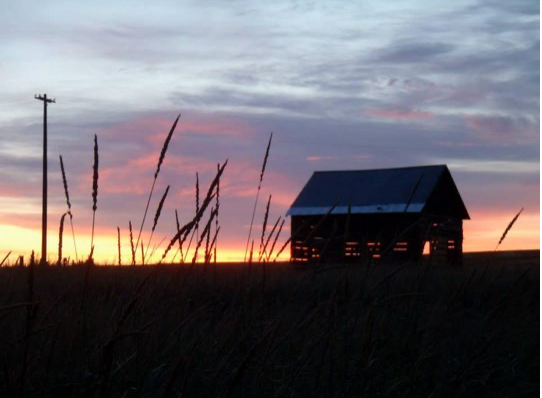Genevieve St. Martin (1814-1904)
Genevieve was born in 1814 in Clatsop, Oregon Territory,[1] the métis daughter of French-Canadian Joseph St. Martin and a Chinook woman whose name was not recorded.[2] Genevieve seems to have lived in French Prairie and Marion County, Oregon for her entire life. In 1830 she married Pierre Bellique (1797-1849); she was 16, he was 33. Pierre was also French-Canadian, a former steersman and trapper for the Hudson’s Bay Company. He was one of the founding members of the French Prairie community, and was later involved in the creation of a provisional government in Oregon.[3] Genevieve and Pierre had seven children, six of whom lived to adulthood.[4]

By 1834, there were roughly twenty Catholic families in French Prairie, but no priest. They wrote to Bishop Provencher in Red River, Manitoba, Canada (then known as the Bishop of Juliopolis) in 1834, 1835, and again in 1837 requesting clergy, so that they might bring up their children in their faith.[5] The first Catholic missionaries to the region, Francis N. Blanchet and Modeste Demers, arrived from Quebec in 1838. Between January 6 and February 3, 1839, Father Blanchet married twenty-four métis couples and baptized seventy-three people at the Willamette mission, including Genevieve and Pierre Bellique and their three children.[6] In subsequent years, Genevieve would serve as godmother to nearly two dozen children in French Prairie.[7] Two of her daughters, Mary Sophie and Esther, attended Catholic girls’ schools founded by the Sisters of Notre Dame de Namur.[8]
Pierre Bellique was well-to-do in French Prairie, but like many of his neighbors succumbed to gold fever and headed for California with his oldest son (then just 13 years old) in 1848. Pierre died and was buried at sea on the return trip in October 1849. The gold dust was lost overboard, and his son returned home with nothing. Pierre had made a will before he left for California, providing $800 to his daughters Sophie, Genevieve, and Esther, and the same to his sons Jean Baptiste and Cyprien. The children were to have the livestock. His wife Genevieve St. Martin, was to receive a third of his “movable and immovable goods.”[9]

Genevieve remarried within a year, to Casimir Gardipe (born c.1825), a man ten years her junior with reputation for violence.[10] They had six children together, but this second family fared less well than Genevieve’s first–three of the children died as toddlers.[11] In 1870 at the age of 13, her son Narcisse was living with his half-sister Genevieve and her husband Felix Gregoire, who had no children of their own; his brother Edouard appears on the census in the same household in 1880.[12]
Genevieve St. Martin died in Marion County in 1904. Six of her twelve children preceded her in death.
Return to Women’s History Project
[1] Early Oregonians Index 1800-1860, entry for StMartin, Genevieve, accessed June 9, 2017, https://secure.sos.state.or.us/prs/profile.do?ancRecordNumber=104557 .
[2] Ibid.; Marie Leona Nichols, The Mantle of Elias: the Story of Fathers Blanchet and Demers in Early Oregon (Portland: Binfords & Mort, 1941), 264.
[3] Melinda Marie Jetté, At the Hearth of the Crossed Races: A French-Indian Community in Nineteenth-Century Oregon, 1812-1859, (Corvallis: Oregon State University Press, 2015), 93 and 167-68.
[4] Bruce McIntyre Watson, Lives Lived West of the Divide: A Biographical Dictionary of Fur Traders Working West of the Rockies, 1793-1858 (Kelowna: University of British Columbia, 2010), 210; Brooke L. Boulware, The Deathscape of St. Paul: Historic Cemeteries as Cultural Landscapes, Thesis (Boulware, 2008); online, Oregon State University, 25, accessed July 26, 2016, http://ir.library.oregonstate.edu/xmlui/bitstream/handle/1957/8304/Boulware_thesis.pdf.txt?sequence=6.
[5] Jetté, At the Hearth, 70 and 93.
[6] Nichols, Mantle, 264.
[7] Harriet Duncan Munnick, Catholic Church Records of the Pacific Northwest: St. Paul, Oregon 1839-1898 (Portland: Binford & Mort, 1979); Vol I: 6, 7, 15, 18, 20, 66, 90, 101, 110, 118, 119, 127, 128, 132, 136; Vol II: 7, 14, 18, 26.
[8] Jetté, At the Hearth, 155. One school was in St. Paul and another in Oregon City- see Shawna Lee Gandy, “Fur Trade Daughters of the Oregon Country: Students of the Sisters of Notre Dame de Namur, 1850” (M.A. thesis, Portland State University, 2004), 155, accessed June 16, 2017, http://pdxscholar.library.pdx.edu/cgi/viewcontent.cgi?article=3724&context=open_access_etds.
[9] Jetté, At the Hearth, 209.
[10] Oswald West, “Oregon’s First White Settlers on French Prairie”, Oregon Historical Quarterly 43, no.3 (Sept, 1942): 204, http://www.jstor.org/stable/20611437.
[11] Luce Gardipe: Early Oregonians Index, entry for Gardipie, Luce, accessed June 9, 2017, https://secure.sos.state.or.us/prs/profile.do?ancRecordNumber=111345; Caroline Gardipe: Early Oregonians Index, entry for Gardipie, Caroline, accessed June 9, 2017, https://secure.sos.state.or.us/prs/profile.do?ancRecordNumber=111387; Charles Hilaire Gardipe: Early Oregonians Index, entry for Gardipie, Charles Hilaire, accessed June 8, 2017, https://secure.sos.state.or.us/prs/profile.do?ancRecordNumber=109937.
[12] Narcisse Gardipe lived with the Gregoires by 1870, at the age of 13. By 1880, Narcisse was 22 and he had been joined by his older brother Edouard, who was 29. They both worked as farm laborers. See 1870 US Federal Census, Census Place: Fairfield, Marion, Oregon; Roll: M593_1287; Page: 57B; Image: 142063; Family History Library Film: 552786; also see 1880 US Federal Census, Census Place: Gervais, Marion, Oregon; Roll: 1082; Family History Film: 1255082; Page: 106D; Enumeration District: 084; Image: 0552.

